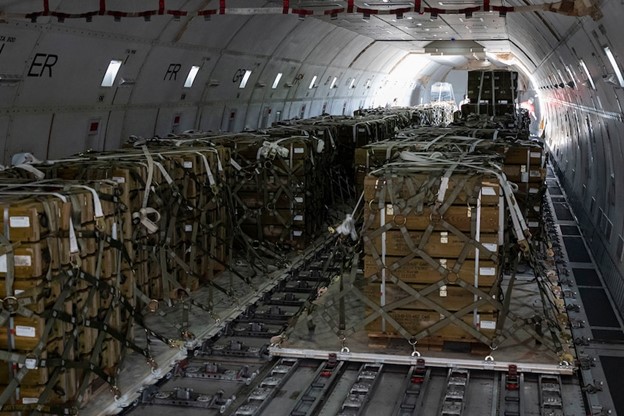The worrisome revelations about America’s ability to arm itself and its allies were a key topic for the Pentagon this Spring. A study by the Texas National Security Review reported that the Defense Department has acknowledged the urgency of strengthening the linkages between a healthy defense industrial base and U.S. military power. Despite this, the views of defense-tech companies are often overlooked.
President Biden, while signing vitally needed legislation aimed at providing $1 billion of vitally needed supplies to Ukraine, noted that items already in the U.S. defense arsenal would be utilized, and replaced as quickly as possible. Whether that can be done quickly enough is an important concern.
There has been some improvement in manufacturing. In the U.S., defense officials have said that production of 155 mm artillery ammunition recently surpassed 30,000 rounds per month. Through the opening of a new production facility in Mesquite, Texas, in May and other expansion efforts, output is expected to reach nearly 70,000 rounds per month by the end of year.
But in the event of a major confrontation with Russia, China, or both, would the nation be able to produce the weapons needed?
The Department of Defense reports that “The events of recent years dramatically exposed serious shortfalls in both domestic manufacturing and international supply chains. The COVID-19 crisis demonstrated America’s near wholesale dependency on other nations for many products and materials crucial to modern life.4 Longstanding mobilization authorities, such as the Defense Production Act, were needed in the first months of the crisis to prevent expected shortages in medical equipment and other crucial items. The Russian Federation’s full-scale invasion of Ukraine in 2022, followed the next year by attacks by Hamas on Israel, uncovered a different set of industrial demands and corresponding risks. The U.S. defense industry has been called on to surge production of military equipment in large quantities, especially munitions – from 155mm military artillery shells, a staple of armies since the First World War, to the most sophisticated missile defense systems.”
The Center for Strategic and International Studies warns that “In a major regional conflict—such as a war with China in the Taiwan Strait—the U.S. use of munitions would likely exceed the current stockpiles of the U.S. Department of Defense (DoD). … the United States would likely run out of some munitions—such as long-range, precision-guided munitions.This would occur in less than one week in a Taiwan Strait conflict….These shortfalls would make it difficult for the United States to sustain a protracted conflict.These problems are particularly concerning since the rate at which China has been acquiring high-end weapons systems and equipment is five to six times faster than the United States, according to some U.S. government estimates.”
Despite these findings, the Heritage Foundation has found that leaders in Congress and the executive branch have not yet chosen either to increase federal funding for defense or to make the difficult trade-offs (such as cutting entitlement spending) that would be necessary under such an increase to enable a restoration of this key capability. The global threat environment is growing more hostile as the economic and cultural factors that historically have supported U.S. military strength decline. Not only have manufacturing and key industrial processes moved overseas, but—even worse—they have moved to China, America’s chief rival. The U.S. is in a ‘new Cold War’ with China even as the two countries’ economies are deeply intertwined.”
The expected rapid pace of warfare on the horizon means that any delay in producing the weaponry and ammunition the U.S. and allied nations will require would prove fatal.
